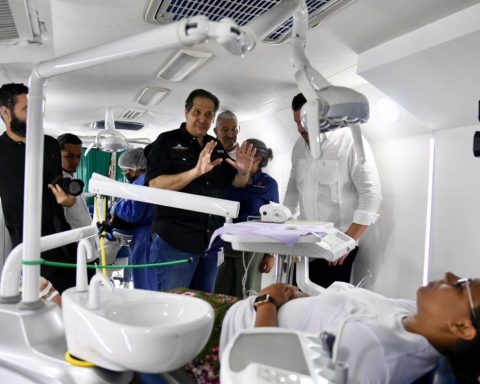December and the Christmas season It is one of the most interesting periods for owners of short-term rental properties in Colombia, especially in tourist destinations.
This, since the country has already positioned itself as one of the most ‘magical’ and surprising destinations for travelers, thanks to its natural and cultural diversity and its rich gastronomy. In fact, of the 5.8 million tourists reported by Migración Colombia last year, 620,000 arrived in the last month of the year..
(Further: ‘Standing seats’?: the proposal to reduce costs and spaces in air travel).
And vacation rentals are gaining more popularity every day in Latin America. According to AJL Atelier, Supply in the region grew by 49% between 2019 and 2024, reaching 1.2 million listed properties and generating income of more than $3.2 billion. This growth is reflected in part by a shift in consumer behavior, especially among millennials and Generation Z, who account for 60% of global bookings on Airbnb.
Although Colombia is not immune to this trend, the truth is that, as explained Xavier Cárdenas, co-founder and CEO of wellcome.travela company specialized in the management and administration of Short and Vacation Rentals, despite the promise of lucrative income that this type of property offers, especially in times of high tourist influx, the reality is more complex.
Lodging
Therefore, if there are Colombians considering entering this business, or who are already part of it, the manager recommends that it is very important to evaluate the following key aspects to understand true profitability:
– Dependency on platforms and commission costs: Short-term and vacation rental platforms usually charge commissions that can range between 12% and 25% of income. To diversify booking sources, owners should consider direct sales strategies, although this involves additional costs in advertising and management tools.
– Maintenance and wear: Intensive use of a vacation property leads to greater wear and tear. According to data from wellcome.travel, owners must allocate between 2% and 5% of their income to a fund to maintain the quality of the property and replace their assets.
– Hidden operating costs: Amenities such as pools, spas and additional services significantly increase operating costs. Additionally, guests expect basic cleaning and kitchen supplies, which represents a significant recurring expense.
– Professional management: Managing a vacation property is not a simple task. From customer service to coordinating cleaning and repairs, these activities require time and resources. Having professional management services can optimize the operation and ensure a satisfactory experience for guests.
– Consumption of public services: Usually, guests tend to consume 30% more water and electricity than permanent residents. It is crucial to consider this aspect in the operating cost analysis.
– Policies, taxes and regulations: You should not underestimate the costs related to insurance, taxes and local regulations which can represent significant expenses. For example, in some countries, licenses and permits are required to operate legally and can add up to thousands of dollars annually.
– Stabilization and seasonality: This business presents a stabilization curve necessary to position itself and achieve optimal performance in the market. At Wellcome.travel, it has been noted that this period usually lasts from three to six months, depending on the nature of the project, and in some cases, it can extend between nine months and a year. Investors should consider this factor when projecting their cash flows. Furthermore, this sector is very sensitive to seasonality, which implies months of high profitability interspersed with others of lower performance. In many cases, success lies in adequate property management that allows for both short and medium rentals, a strategy that the property management of this startup has usually implemented in the hospitality industry for more than 10 years, known as Revenue management. Management.
(Besides: Akaunt platform launches card for digital dollar savings account users).

Airbnb
Let’s talk about costs
All these costs can represent between 30% to 45% of income.Although this model can generate income that is triple that of a traditional rental, Xavier Cárdenas warns about the importance of setting realistic expectations.
Annual net returns typically range between 8% and 12%, reaching a maximum of 16% in exceptional cases. However, to achieve these figures, it is essential to have efficient management and adequate financial planning.
PORTFOLIO
















